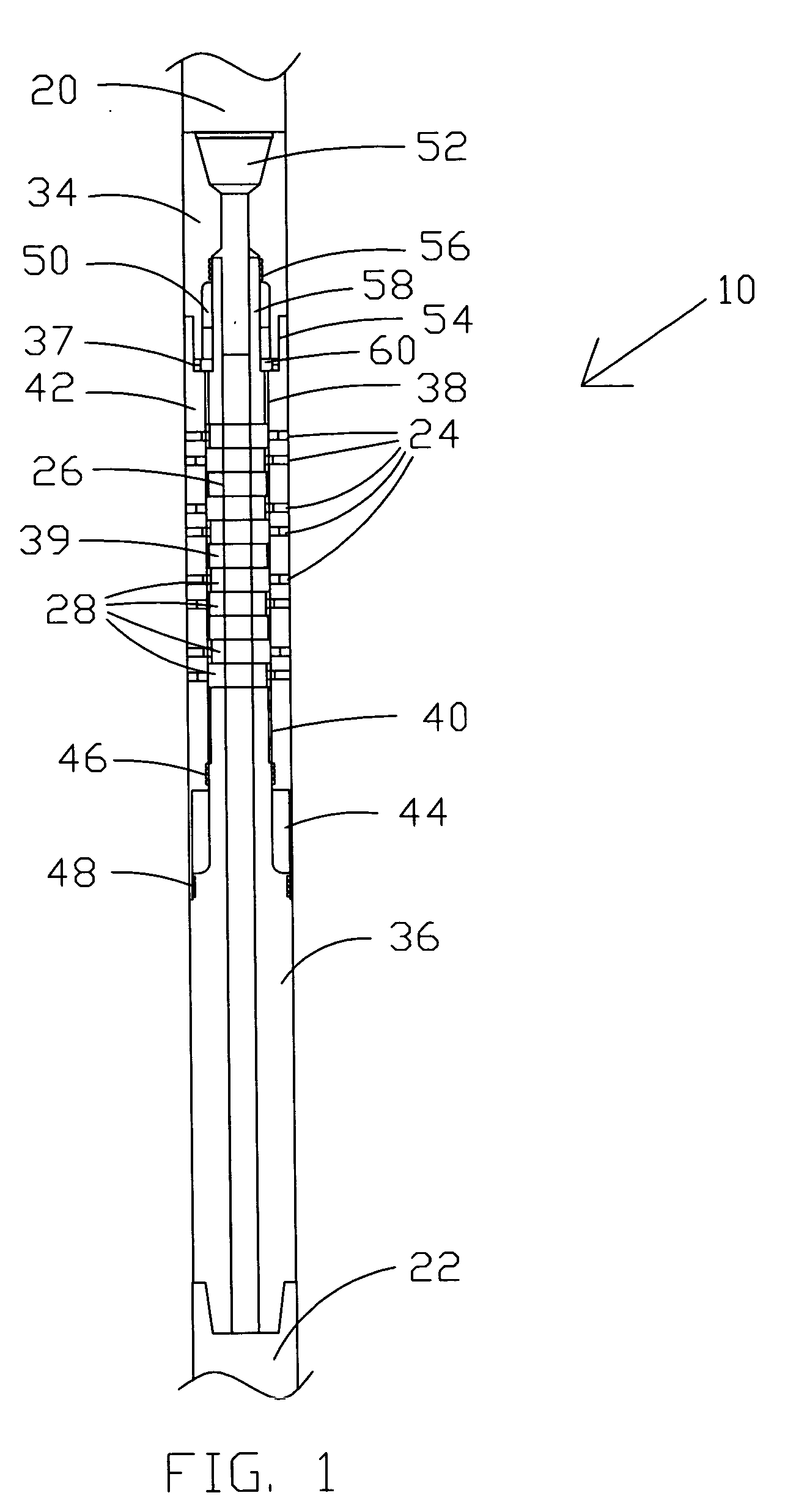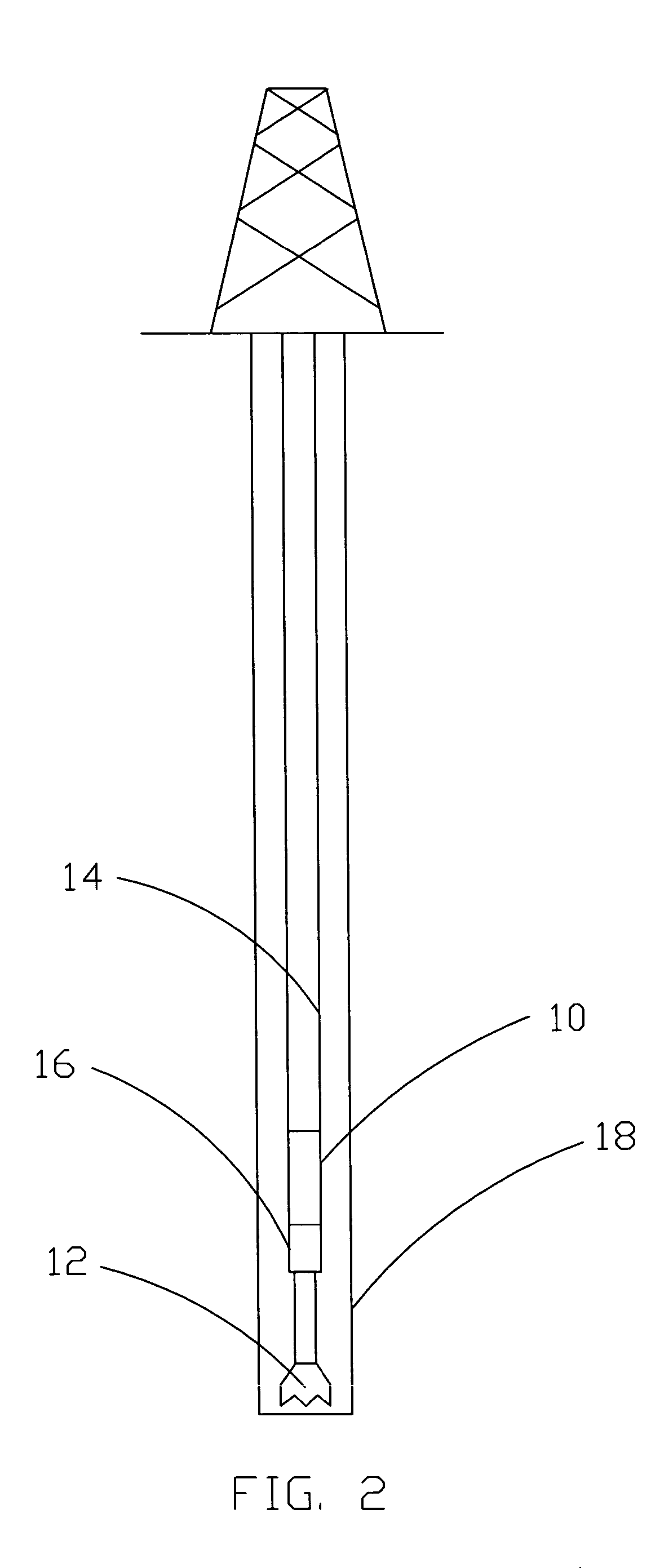It has been said by top industry experts that slip-stick is the single greatest problem for modem oil and gas
well drilling.
Other industry technical experts have said that axial bit vibrations and / or bit bounce comprise the most significant problem in oil and gas well drilling.
The windup and unwinding causes the entire drill string to shorten and then lengthen.
In the past, the cycles
torsional oscillations continue until the driller removes WOB or there are connection failures.
Drill string torsional vibrations occur frequently during drilling.
When torsional vibrations become severe, they can escalate into slip-stick oscillations whereby the bit may briefly stop turning or at least slow down until sufficient torque is developed at the bit to overcome
static friction.
Because modern PDC
cutting elements of bits have a very
short length and, ideally, must be held in constant
close contact with the surface to be
cut for maximum
cutting effects, even small axial changes in the length of the drill string can significantly impede drilling progress and can cause bit bounce.
Moreover, torsional slip-stick is often regarded as one of the most damaging moues of vibration.
The fluctuating torques in the drill-string are difficult to control without repeatedly pausing drilling.
Torsional slip-stick almost invariably causes damage to the bit or drill-string.
Even
small amplitude slip-stick vibrations are thought to be a major cause of bit wear.
Torsional vibrations also affect the borehole and may produce a twisted borehole that becomes the source for additional torque.
Thus, the problem of torsional vibrations is self-reinforcing.
For instance, it has been found that
tortuosity, or spiraling effects frequently produced in the
wellbore during drilling, are associated with degraded bit performance, bit whirl, an increased number of drill string trips, decreased reliability of MWD (
measurement while drilling) and LWD (
logging while drilling) due to the vibrations generally associated therewith, increased likelihood of losing equipment in the hole, increased circulation and mud problems due to the troughs along the spiraled
wellbore, increased stabilizer wear, decreased control of the direction of drilling, degraded
logging tool response due to hole variations including washouts and invasion, decreased cementing reliability due to the presence of one or more elongated troughs, clearance problems for gravel packing screens, decreased ROP (rate or speed of drilling penetration), and many other problems.
During the drilling of a well, considerable time is lost due to the need to trip the drill string.
However, due to their size and construction, prior art weight collars are unbalanced to some degree and tend to introduce variations.
Moreover, even if they were perfectly balanced, the
heavy weight collars have a buckling point and tend to bend up to this point during the drilling process.
The result of imbalanced
heavy weight collars and the bending of the overall downhole assembly produces a
flywheel effect with an imbalance therein that may easily cause the
drill bit to whirl, vibrate, and / or lose contact with the
wellbore face in the desired drilling direction.
However, this then decreases the annular space between the higher
diameter steel drill collars and the wall of the bore hole.
The decrease in annular space creates a significant
washout of the hole due to the necessarily higher velocity mud flow through a smaller annulus, especially in uncompacted formations.
The effects include
high torque and drag, poor hole cleaning, drill string buckling, and loss of available drilled depth, among other negative conditions.
The above cited prior art does not provide a reliable means for preventing slip-stick during drilling.
 Login to View More
Login to View More  Login to View More
Login to View More 


